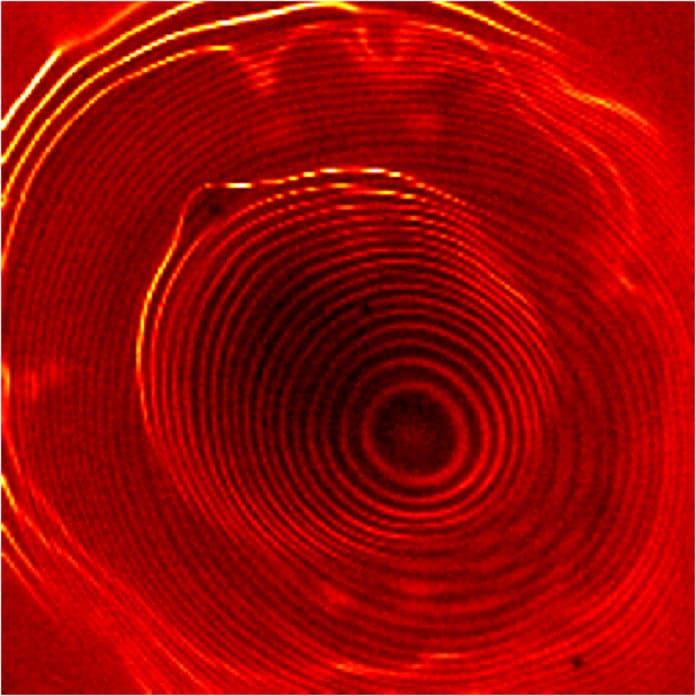For the first time, scientists at the National Institute of Standards and Technology (NIST) have created and imaged a new pair of quantum dots in graphene, a highly interacting quantum relativistic system with tunable density.
These “coupled” quantum dots are tiny islands of confined electric charge that act like interacting artificial atoms. They could perform much larger, more complex operations than classical bits and have the potential to revolutionize computing.
At each energy level, an electron can occupy a range of possible positions in the dot, tracing out an orbit whose shape is determined by the rules of quantum theory. A pair of coupled quantum dots can share an electron between them, forming a qubit.
Scientists fabricated these quantum dots using the ultrasharp tip of a scanning tunneling microscope (STM) as if it were a stylus of an Etch A Sketch. They then hovered the tip above an ultracold sheet of graphene; the researchers briefly increased the voltage of the tip.
The electric field produced by the voltage beat entered through the graphene into an underlying layer of boron nitride, where it took electrons from atomic impurities in the layer and made a pileup of electric charge. The pileup corralled freely floating electrons in the graphene, confining them to a tiny energy well.
But, when applying a magnetic field of 4 to 8 tesla, it changes the shape and distribution of the orbits that the electrons could occupy. Instead of a single well, the electrons now resided within two sets of concentric, closely spaced rings within the original well separated by a small empty shell. The two sets of rings for the electrons now behaved as if they were weakly coupled quantum dots.
NIST co-author Daniel Walkup noted, “This is for the first time, we probed the interior of a coupled quantum dot system so deeply. We imaged the distribution of electrons with atomic resolution.”
By taking advantage of a special relationship between the size of a quantum dot and the spacing of the energy levels occupied by the orbiting electrons, scientists were able to take high-resolution images and spectra of the system.
The smaller the dot, the higher the spacing, and the easier it is to distinguish between adjacent energy levels.
By using the STM tip to construct dots about half the diameter (100 nanometers) of dots that they had previously studied, the scientists succeeded in revealing the full structure of the coupled system.
The team, which included Walkup, Fereshte Ghahari, Christopher Gutiérrez, and Joseph Stroscio at NIST and the Maryland NanoCenter.
Journal Reference:
- Tuning single-electron charging and interactions between compressible Landau level islands in graphene. DOI: 10.1103/PhysRevB.101.035428
